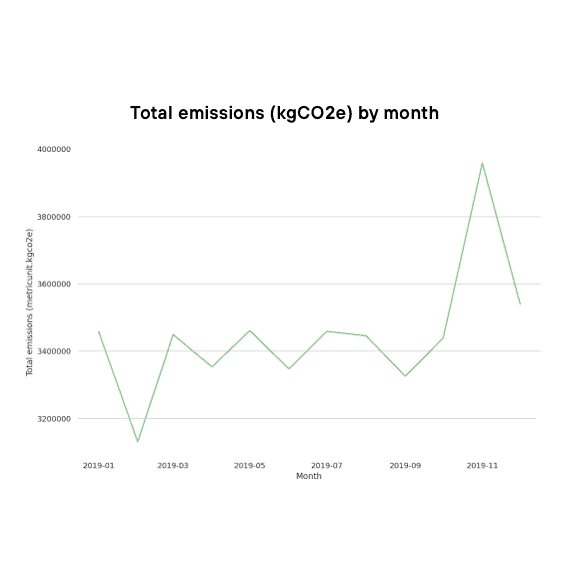EMISSION REDUCTIONS
Getting real about emission reductions
How to set, track and act to reduce your company’s carbon emissions.

What reductions really mean.
Greenhouse gas emissions contribute to global warming, and climate change isn’t good for anyone, making reducing emissions essential for everyone. Reductions aren’t to be confused with carbon offsetting, which can act as a temporary bridge to neutrality, but won’t enable us to achieve the change necessary for us to avoid a climate catastrophe.
Reduce now or forever hold your peace
Our planet has warmed by 1.19°C since pre-industrial times, and the Paris agreement hopes to keep that below 1.5°C, yet, we are currently on track for 3°C of warming.
So you know the science, but what’s the commercial motivation for reduction?
Getting left behind
Over 1/5th of the world’s largest companies, representing sales of $14 trillion, have committed to net-zero emissions. Currently, 1,500 companies are participating in the Science-Based Targets Initiative. Reducing your emissions has become a public declaration.
The new normal
The Paris Agreement set out timescales to transition to carbon zero, with many countries aiming to make significant reductions by 2050. To achieve these goals, simply reporting on emissions won’t be enough. Reductions will be expected alongside taxes on carbon-intensive activities.
Make a good impression
2/3rds of consumers feel more positively about companies making efforts to reduce the carbon footprint of their products. Customer sentiment is growing for sustainable companies and products; reducing emissions gives you good stories to share.

Why we need a better way to trim emissions
Often the first step is the hardest; choosing where to cut emissions and how can be tricky, especially when based on outdated static carbon baselines. This also raises the question of how to track the success of your strategies effectively.
The quality of data is a concern. As we’ve seen with carbon footprinting, data gaps, and guesstimates over scope 3 value chain activities often undermine the drive to take tangible climate action.
Reduction strategies often involve stakeholder commitments financially and logistically, and reduction strategies have a terrible and misleading reputation for being high-cost and high-risk. Fewer talk about the rewards, mind you, why would competitors share their recipe for success?
Realistic reduction strategies are ready for you
Get Set
Identify carbon hotspots and set targets to reduce them
Stay on Track
Monitor your progress towards the target instantly
Confidence to Act
Take actions based on accurate data and pivot when needed

GET SET
Take aim at the right reductions
With Emitwise, you benefit from a rich understanding of your company’s emissions landscape, spanning well beyond what you directly control to include your supply chain.
Our dashboards make identifying which carbon hotspots to tackle first much easier, quickly highlighting where you can have the most significant carbon impact and which part of the business will need to support you.
All that’s left to decide is what format your reduction target will take, from an internal KPI to Science-based targets. Whatever you decide, our platform can support you.
STAY ON TRACK
The devil’s in the data
We set targets in every part of business life, from OKRs to KPIs. To assess our success in delivering them, we measure our outcomes and pivot when we go off-piste. Reduction strategies with Emitwise are no different.
By adding your reduction goals and targets into the platform, we can create dashboards to help you track, pivot and reach your reduction goals. As you’ve seen from our carbon accounting and sustainability reporting, this is possible because we deal in high precision emission data delivered continuously.


CONFIDENCE TO ACT
Armed with the tools to reduce emissions
It can be a big ask to commit to a target or strategy, especially at the start of your sustainability journey. Our platform allows you to experiment with activities and analyse your results without undergoing a mass roll-out, meaning you can remain agile and test what works for your company.
Collaboration is crucial for taking ambitious climate action, which can mean building narratives and business cases to convince others that climate positive actions are realistic and profitable.
More ways to use Emitwise
Net-zero Journey
Wherever your company is on its sustainability journey, discover ways to accelerate your transition to net-zero.
Carbon Accounting
Want to reduce your operational and supply chain emissions? Carbon accounting is the first step on your net-zero journey.
Sustainability Reporting
Go above and beyond compliance, share your net-zero journey with stakeholders and regulators the easier way.
Enabling ambitious climate action…

“Emitwise is our single source of truth that shows our executive board, investors, and other stakeholders that we take cutting our emissions seriously. Working with the best solution out there gives us this credibility in these conversations.”
Kevin Dunckley • Chief Sustainability Officer
Interested in learning more?

